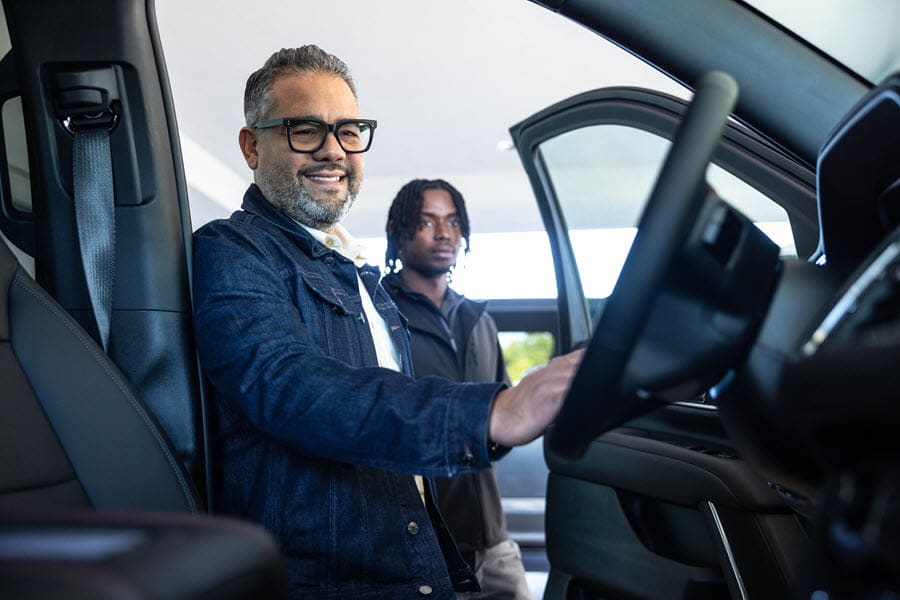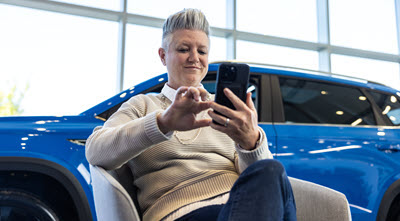With customer expectations evolving and technology advancing faster than they have in the past, dealerships face a pivotal moment to reimagine they do business to better engage buyers the way they prefer.
This blog explores how dealers can build stronger connections with customers to sell more vehicles and deliver better experiences that seed future business. The blog draws insights from Cox Automotive’s 2023 Car Buyer Journey study and shows how vAuto and other solutions providers are helping dealers meet specific consumer expectations and needs.
Understanding the Modern Car Buyer

Cox Automotive’s study helps you understand the diversity of today’s vehicle buyers. They span multiple generations, bring different motivations to the table, and possess varying financial profiles—all of which shape their distinct needs and expectations. Some study highlights:
- Traditional new car buyers average 50 years old.
- Electric vehicle (EV) buyers tend to skew younger, with an average age closer to 41.
- Millennials represent a significant share of buyers overall, with Gen Z emerging as a key demographic for EV purchases.
- Income levels of EV buyers far exceed traditional buyers, averaging around $140K per year.
Understanding these demographic and financial nuances isn’t just an academic exercise; it’s how forward-thinking dealers shape tailored strategies to meet a wide range of preferences. per
Why Drivers Buy Today
Consumer behavior has always been influenced by economic pressures and personal needs, but the triggers for making a vehicle purchase vary among buyers. For example, new car buyers are motivated by milestones like aging vehicles and higher maintenance/repair costs (25%), the desire for more up-to-date technology and features (23%), or lifestyle changes that necessitate a new type of car (20%). Used car buyers, on the other hand, often cite vehicle reliability concerns or needing a new type of vehicle as primary drivers.
However, the rise of alternative market segments such as EV buyers reshapes buyer motivations. EV buyers are largely tech-savvy, engaged online, and driven by environmental benefits or government incentives for clean energy vehicles.
Each buyer’s underlying motivations offer insights into how dealers can craft messages and purchase experiences that connect directly to the drivers behind each consumer’s decision to purchase a vehicle.
The Digital Evolution of Car Buying

Technology’s role in reshaping consumers expectations of an optimal car-buying experience cannot be overstated. Gone are the days when browsing dealership lots effectively served as every buyer’s default first step. Today, 79% of car buyers visit dealership websites as part of their research, cementing the online domain as a front line in the buying experience.
Today’s buyers seek out transparent pricing, interactive vehicle display options, and online financing tools. Their interest in these technology-driven experiences owes to a desire to feel confident, informed and in control.
One area where dealers can meet customers where they are in the car buying process relates to vehicle valuations. Today, more consumers seek out values for their current vehicle, as well as one they’re looking to purchase, online.
Solutions like Kelley Blue Book® Instant Cash Offer help dealers serve this need by giving customers a more direct, transparent role in determining the value of their current vehicle and providing an initial offer that’s backed by a brand consumers trust. In turn, dealers benefit by using Kelley Blue Book® Instant Cash Offer as a means to engage customers in the digital manner they prefer and provide the start of a more time-efficient and customer-focused buying experience that results in lasting loyalty.
From VDPs to Virtual Rolls Royces
When it comes to how consumers shop online for their next vehicle, it’s important to recognize that consumer expectations have changed—they’ve been shaped by the experiences consumers receive when they shop for other retail goods online.
For dealers, a critical focal point for vehicle buyers rests with the way they regard your Vehicle Details Pages (VDPs). The key test: Do they provide the immersive experiences–360-degree views, embedded explainer videos and personalized overlays—buyers want to have a robust understanding of a vehicle before they set foot in a dealership?
vAuto’s merchandising solutions, including Intelligent Promotion, give dealers the means to overhaul these digital touchpoints and tell better stories about each car’s features and value. When VDPs connect better with buyers, dealers are better positioned to capture consumer interest and turn their inventory more quickly.
The Hybrid Customer Journey

Even with the surge of digital tools, the industry remains largely rooted in a hybrid model that combines online resources with physical dealership experiences. The study finds that an overwhelming 93% of purchases in 2023 combined online and in-person steps, reaffirming that the future of car buying depends on omnichannel strategies. Whether it’s scheduling test drives or finalizing pricing conversations, dealerships must offer a seamless bridge between their website and their showroom.
Cox Automotive’s new Retail 360 solution helps dealers provide a more seamless experience as consumers move online to the showroom or complete the entirety of their vehicle purchase process online.
How to Address the Affordability Challenge
Through much of 2023 and 2024, Cox Automotive’s dealer sentiment studies have shown that dealers are concerned about vehicle affordability. The average transaction price of a new vehicle is close to $48,000, and the average listing price of a used vehicle is close to $25,500.
Both averages are far higher than they were just a few short years ago—a fact that consumers understand all too well. The Cox Automotive buyer journey study found that 49 percent of new/used vehicle buyers found that prevailing prices for vehicles where higher than they expected.
Dealers can help today’s vehicle buyers find their best next vehicle and address their affordability concerns by addressing two critical fronts—your inventory strategy and your pricing strategy.
Inventory Strategy: vAuto’s new and used vehicle inventory management solutions help dealers better connect their strategy for stocking their inventories to the vehicles that are currently selling in the market. When stocking decisions do not reflect current market conditions, dealers run the risk of curating new and used vehicle inventories that are out of step with consumer expectations and their concerns about vehicle affordability.
vAuto’s Conquest solution helps dealers align the days supply of new vehicles in their inventories to the Market Days Supply of specific model/trim lines in the local market. Such insights can help dealers understand they may be too heavily stocked in vehicles that may be less affordable than others in the lineup.
vAuto’s Provision and ProfitTime GPS solutions provide similar stocking strategy insights to help dealers fine tune the vehicle segments and price points that will play the best in their local markets.
Pricing Strategy: In a market where affordability is top of mind for many buyers, it’s important for dealers to ensure the prices they ask for their new and used vehicles fall within the ranges that today’s buyers expect, based on the research and shopping they’ve already done online.
As dealers define their pricing strategy, it’s important to recognize that having the lowest price in the market for a new or used vehicle isn’t always necessary if other elements of your consumer engagement, like the appraisal offer and valuation noted above, give buyers a reason to have confidence and trust in the price you’re offering.
That said, however, concerns about vehicle affordability mean that today’s new and used vehicle buyers are price conscious. They will by pass vehicles that, based on their estimation, are priced too high compared to other vehicles.
vAuto’s new and used vehicle solutions help dealers determine the optimal price point for every vehicle, based on their strategic objective to go for volume, gross profit or a combination of both. On the new vehicle side, it’s also important for dealers to make sure their pricing, and related merchandising, captures the latest incentives and rebates to ensure the price an online buyer sees reflects the current price for the vehicle in the current market.
Closing Thoughts
The way customers buy cars has changed. Their expectations haven’t. They still want clarity, fairness, and convenience—achievable only when physical and digital buying methods harmonize. At vAuto, we don’t just help dealers solve today’s challenges—we work to help make your business better and set the stage for your future success.

















